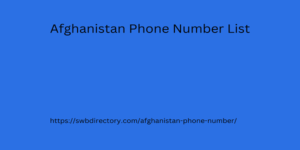Post by samiul114111 on Sept 11, 2024 5:09:28 GMT
Lead is a material widely recognized for its ability to shield against ionizing radiation, such as X-rays and gamma rays, due to its high density and atomic number. This effectiveness makes lead a standard choice for radiation protection in medical and industrial settings where high-energy radiation is a concern. However, when considering whether lead can shield against cell phone radiation, which is non-ionizing radiofrequency (RF) radiation, the situation is more complex.
Cell phones emit RF radiation, a type of non-ionizing electromagnetic radiation. Unlike ionizing Afghanistan Phone Number List radiation, RF radiation has lower energy and longer wavelengths, meaning it does not have enough energy to ionize atoms or molecules or cause direct damage to cellular structures and DNA. The potential health effects of long-term RF exposure are still being researched, but it is generally considered less hazardous compared to ionizing radiation. This has led to an interest in various methods to reduce RF exposure, including the use of shielding materials.
Lead’s effectiveness at blocking ionizing radiation is well-documented, making it a reliable choice in contexts where high-energy radiation needs to be mitigated. However, RF radiation interacts differently with materials compared to ionizing radiation. The long wavelengths and lower energy of RF radiation mean that lead is not particularly effective at blocking or attenuating this type of radiation. The properties of RF radiation require materials that can reflect or scatter electromagnetic waves more effectively than lead.

Materials like copper and aluminum are better suited for RF shielding. These metals can effectively reflect and scatter RF radiation, making them more suitable for reducing exposure. Copper and aluminum are commonly used in RF shielding applications, such as in phone cases and protective clothing, due to their ability to manage the specific frequencies and wavelengths of RF radiation.
Moreover, lead poses significant health risks. It is a toxic substance that can cause severe health issues, including neurological damage, kidney problems, and developmental delays, particularly in children. The risks associated with lead poisoning make it unsuitable for use in consumer products that come into regular contact with the body, such as phone cases or protective gear.
Additionally, lead is heavy and cumbersome, making it impractical for use in everyday items designed to reduce RF radiation exposure. Its physical properties would make products bulky and less user-friendly.
In summary, while lead is effective at shielding against ionizing radiation, it is not an ideal material for blocking cell phone RF radiation. The nature of RF radiation requires materials that can more effectively reflect or scatter electromagnetic waves, such as copper and aluminum. The health risks and practical limitations associated with lead further reduce its suitability for RF shielding. Safer and more effective alternatives should be used to mitigate cell phone radiation exposure.
Cell phones emit RF radiation, a type of non-ionizing electromagnetic radiation. Unlike ionizing Afghanistan Phone Number List radiation, RF radiation has lower energy and longer wavelengths, meaning it does not have enough energy to ionize atoms or molecules or cause direct damage to cellular structures and DNA. The potential health effects of long-term RF exposure are still being researched, but it is generally considered less hazardous compared to ionizing radiation. This has led to an interest in various methods to reduce RF exposure, including the use of shielding materials.
Lead’s effectiveness at blocking ionizing radiation is well-documented, making it a reliable choice in contexts where high-energy radiation needs to be mitigated. However, RF radiation interacts differently with materials compared to ionizing radiation. The long wavelengths and lower energy of RF radiation mean that lead is not particularly effective at blocking or attenuating this type of radiation. The properties of RF radiation require materials that can reflect or scatter electromagnetic waves more effectively than lead.

Materials like copper and aluminum are better suited for RF shielding. These metals can effectively reflect and scatter RF radiation, making them more suitable for reducing exposure. Copper and aluminum are commonly used in RF shielding applications, such as in phone cases and protective clothing, due to their ability to manage the specific frequencies and wavelengths of RF radiation.
Moreover, lead poses significant health risks. It is a toxic substance that can cause severe health issues, including neurological damage, kidney problems, and developmental delays, particularly in children. The risks associated with lead poisoning make it unsuitable for use in consumer products that come into regular contact with the body, such as phone cases or protective gear.
Additionally, lead is heavy and cumbersome, making it impractical for use in everyday items designed to reduce RF radiation exposure. Its physical properties would make products bulky and less user-friendly.
In summary, while lead is effective at shielding against ionizing radiation, it is not an ideal material for blocking cell phone RF radiation. The nature of RF radiation requires materials that can more effectively reflect or scatter electromagnetic waves, such as copper and aluminum. The health risks and practical limitations associated with lead further reduce its suitability for RF shielding. Safer and more effective alternatives should be used to mitigate cell phone radiation exposure.
